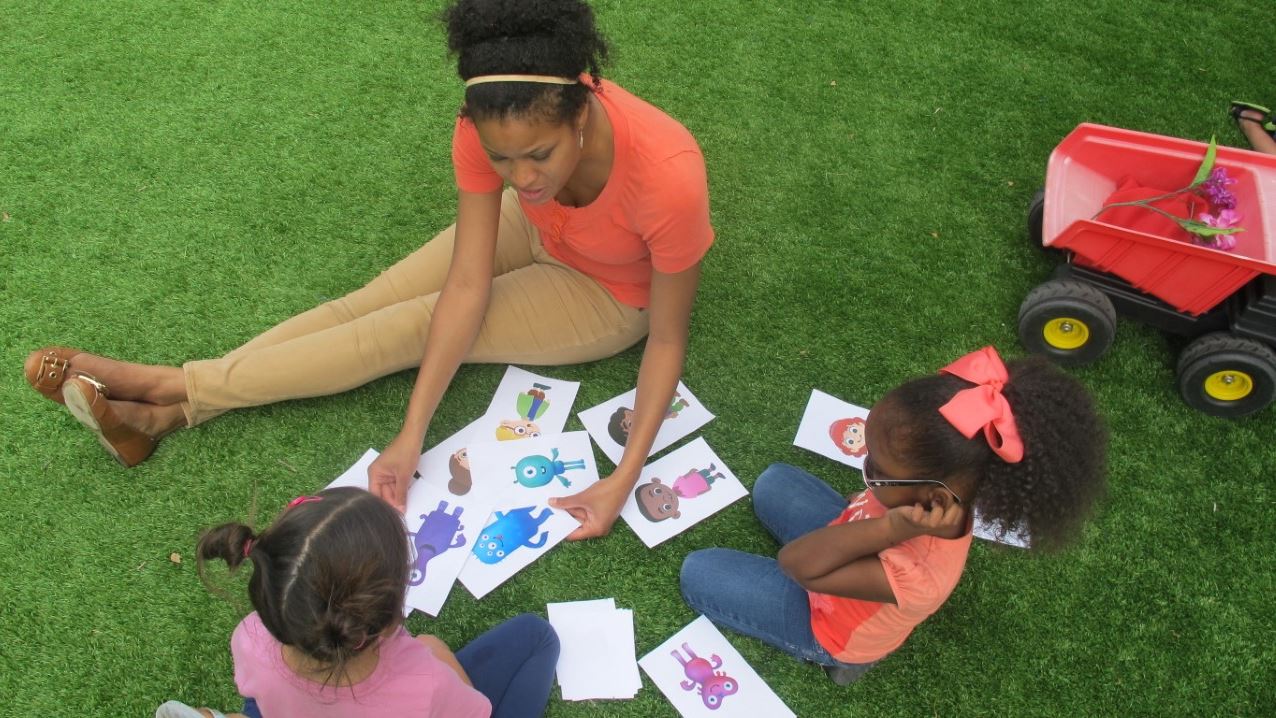Children in the U.S. are using their screens more and more – for learning and for fun – and New Mexico State University researchers are finding the tools to use that screen time to help the youngest learners in important ways. They have created a suite of apps that encourage healthy eating and give children fun ways to exercise, while also paying attention to what the users see on their screens.
“Foods and Moves” is a new, four-app suite for preschool learners to help them be active and try new foods. The youngest children jump, glide and hop along with six animated monsters and four human children in “Jungle Gym 1,” and as their physical skills increase, they can move along in “Jungle Gym 2.” “Spin-n-Move" offers a fun spin-to-play experience as children wiggle like spaghetti or jump like a frog. In “Tasting Party Express,” children feed monsters and human children while developing their vocabulary and willingness to try new foods. All four apps are based on research on the key physical movements children need at this age, and proven strategies for increasing fruit and vegetable consumption throughout childhood. The free apps are available to download from the Apple and Google app stores.
“The apps are beautiful and engaging, and we love that our research partners could guide us in proven strategies for helping kids be healthier,” said Barbara Chamberlin, interim department head of Innovative Media Research and Extension at NMSU. “I am always pleased when our shop takes research-based information to make outreach tools to transform users in meaningful ways.”
Chamberlin and the NMSU team co-authored the apps along with Laura Bellows, associate professor of nutrition in the College of Human Ecology at Cornell University; Ligia Reyes, postdoctoral associate at Cornell; and Susan L. Johnson, professor of pediatrics at the University of Colorado Anschutz Medical Campus. They recently published a study, “Engaging Preschoolers in Food Tasting and Movement Activities Using Mobile Applications,” which documented ways to impact young children’s health behaviors that provided the foundation for the apps.
Critical to the apps’ success is showing diversity in animated characters. The team emphasized that children need to relate to the characters so that they can emulate what they see on screen, so the team engaged in new user testing research for this age group.
“Some research indicates that monsters are powerful, because they enable kids to see themselves in that non-human character,” Chamberlin said. “However, the norm in what is usually shown in human representation doesn’t often include a lot of diversity, so if we default to non-human characters, some children never have a chance to see people like themselves in media.”
NMSU graduate student Amanda Armstrong and Adrian Aguirre, production supervisor and program manager of the Innovative Media Research and Extension department, played significant roles in this research. Armstrong is currently finishing her Ph.D. dissertation on representation in children’s apps and found the perfect opportunity to apply her research while conducting user-testing with a series of methods. She adapted many of the methods used to do research with children.
“We did a lot of narrative-based feedback where we asked the kids at a local preschool what characters they liked, then we’d ask them what characters they would like us to tell a story about, or if they wanted to tell a story about different characters,” Armstrong explained. “We found that the preschoolers with different backgrounds were engaged with the monsters and the human characters, and that was replicated. Using research from our partners in tandem with user testing was beneficial when it came to talking about representation and, just in general, producing something that does address the issue of the disparity in representation of different communities. We collaborated to apply diversity in a meaningful way.”
During pre-production, Aguirre served as the art director and brainstormed ideas for what would work best to achieve the team’s goals for users.
“I created several iterations of wireframes and storyboards that would be reviewed by the research team as well as user tested with preschoolers,” Aguirre said. “I also designed the characters and designed the look and feel of all four apps. Once the art style was approved, I was able to direct other artists and animators to create many other art assets that would be needed for the apps.”
“The characters became a very central focal point in the suite of apps. We have content experts who knew the content very well on nutrition and physical movement, but we realized as we were designing, the characters play a central role in helping players connect and engage with the content,” Armstrong said. “It is through the characters that children are encouraged to try the moves and different foods.”
The team practiced user testing in the classroom, as well as in informal learning settings with families, where they encouraged parents to engage with their kids while testing the app. Aguirre had a chance to do this with his own two children.
“When we talk about integrating research on representation and characters, it's just another extension of ‘how do we use research to inform our work?;’” Armstrong explained. “We put research into practice, from content to design to interface, and especially in how the characters are designed.”
The app had its initial launch last year for the research project and is now available free to the public.
Development was supported by an Agriculture and Food Research Initiative Competitive Grant from the U.S. Department of Agriculture’s National Institute of Food and Agriculture under award number 2015-68001-2340.
NMSU research enhances, prioritizes representation in new children’s app
Release Date: 08 Nov 2022

